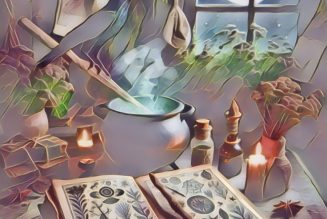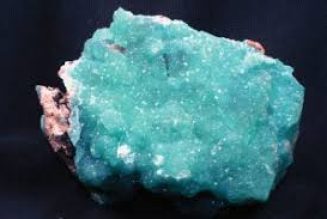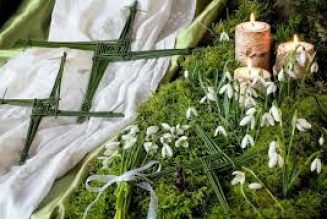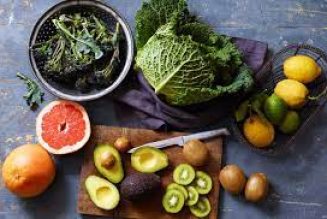More and more people are turning to herbs because there is a growing disappointment with using pharmaceuticals for chronic illness.
Many people are getting fed up with taking a pill that never really cures their illness and gives them awful side effects. Maybe they are concerned about acetaminophen giving their young child asthma (1) or they see the growing evidence about the risks associated with statins (2) and they say enough is enough!
From this moment forward they vow to never resort to drugs again and instead try a more natural and holistic approach thus leading them to the world of herbs and herbalism.
But sometimes their love affair with herbalism is stopped short.
They reach for the closest herb book, try a few remedies and then declare that the herbs don’t work! They tried using horehound for coughing with no relief. They tried meadowsweet for their headache to no avail.
They begin to wonder, “Are herbalists a bunch of delusional wood fairies touting the miracles of something that never works?”
As much as I would love to be considered a wood fairy, I’ll have to say no, this is not the case. I’ve seen herbs work hundreds of times. I’ve seen them work for serious infections as well as serious chronic diseases. I’ve seen them work when modern medicine failed.
Yes, herbs work!
I want to share a handful of reasons why herbs might not work in a given situation.
1. Improper dosing (either too little or too much)
When buying over the counter drugs like NyQuil or Tylenol, they come in a package that is clearly marked with the dosage instructions. Generally these are very simple instructions. “Adults take 2 tablets, three times daily.”
Herbs don’t always come with directions. If you buy bulk herbs the dosing instructions are absent entirely. If you buy a tincture or a bottle of capsules the dosage listed on the bottle has most likely been chosen by the FDA’s labeling mandates and not by an herbalist.
I am not going to lie to you. Dosage in the herbal world is confusing.
In herbalism dosage varies from person to person, from plant to plant and from preparation to preparation.
A 15 minute infusion of a teaspoon of nettle leaf will not extract the same vitamins and minerals as a four-hour infusion of an ounce of nettle leaf in a quart of water.
A few drops of lobelia tincture can promote relaxation. A strong cup of lobelia tea could make you vomit.
One way I commonly see dosages being flubbed in herbalism is people using small amounts of tonic/adaptogen herbs in tincture, versus the traditional use of large amount of tonic/adaptogen herbs as decoctions or powders. (As always go with what works, but if you aren’t getting the results you’d expect after taking 5 drops of ashwanganda tincture twice a day, consider your dose!)
Frequency of dosing can also be an issue. During acute illnesses we generally use slightly smaller amounts but with more frequency. I may take elderberry elixir 1-2 times each hour at the onset of an illness for example. General recommendations are to take herbs 3 times a day, but that won’t cut it for acute illness.
2. Low quality plant material
Herbs often don’t come with an expiration date. Quality can also vary significantly and will suffer greatly if the herbs have been improperly harvested or improperly processed.
Plants decay. They simply go bad. The rate at which they do this varies significantly from plant to plant. If you’ve just pulled a bag of herbs from your back shelf and had to blow off an inch of dust… well, they are probably not at their prime.
Powdered herbs that are exposed to light and oxygen lose their potency fast.
Tinctures and capsules last significantly longer, but again, storage methods and the particular plants can vary widely.
Our senses can reveal a lot about the quality of herbal material. Does it still look vibrant? Dried plants should retain most of the color of the living plant. If your red clover flowers are brown instead of red/purple, toss ‘em. If your chickweed looks like light colored straw instead of vibrant green, too ’em. (By toss ’em, of course I mean compost responsibly.)
Taste can also be a big indicator. I recently compared two year old cayenne powder with freshly powdered cayenne. That taste experiment didn’t take a genius to figure out which one was dramatically more intense.
Know what your herbs taste like when they are at their best (tinctures, teas, powders, bulk herbs, you name it!). This will serve you a thousand times over!
3. Using the incorrect preparation
A tincture is different than a syrup which is different from a tea which is very different from a decoction and on and on and on. Extracting a plant with vinegar or glycerin is dramatically different than using alcohol. This all plays an important role in whether or not a plant will work as well as the dosage!
Example: Milky oats tincture is very different than milky oats dried and made into a tea. Or highly resinous herbs being extracted in too low of alcohol percentage. Or highly mucilaginous herbs being extracted in high alcohol percentage.
4. Ignoring the art of herbalism
The art of herbalism, not herbs alone, is really the keystone of what determines success when using herbs for chronic illness.
Simply put there is no ONE herb for fibromyalgia. There is no ONE herb for eczema.
Instead we want to fully assess a person constitutionally, understand the energetics of their symptoms and use herbs to match the herbs to the person.
Whether you study traditional Western Herbalism, Ayurveda, Traditional Chinese Medicine or the countless other herbal modalities out there each of them has a specialized way of approaching illness. Looking up eczema in an article index and then determining burdock will work (which it sometimes does) is not practicing the art of herbalism. This is more the art of index retrieval.
People are complex, diseases are complex. If a solution seems too simple (particularly for chronic disease), it probably is.
5. Poor herbal formulation
Have you seen kitchen sink herbalism?
This method takes every herb known for X disease and tosses it in a formula. This works sometimes. More often, it doesn’t.
I love studying classic Chinese formulas. At first glance they can seem like a random bunch of herbs thrown into a pot, but upon deeper study the brilliance of the formulas is revealed. There are lots of different ways to formulate. Most have merit. It’s not about the ONE way, but it is about understanding the methods you choose to use.
When I create herbal formulas I have a broad guideline I follow in choosing the main acting herbs, assisting herbs, and guiding herbs.
6. Attempting to use herbs like a silver bullet cure
Herbs are most effective with dietary support, proper rest and exercise, spiritual connection, support of community and other modalities such as massage, acupuncture (and many more).
7. Attempting to suppress symptoms rather than get to the root cause
The most obvious example of this is attempting to treat skin issues using only a topical treatment. In general, symptoms that show up on the skin, eczema, acne, psoriasis, hives, etc are all caused by internal imbalances.
Spreading the latest and greatest cream on eczema, may give some temporary relief (great!) but will most like not solve the underlying issue.
Another way I commonly see this mistake is using cathartic laxatives to evacuate the bowels instead of identifying and addressing the cause of the constipation.
Modern western medicine most often suppresses symptoms rather than cures disease. We are better than that! Make the effort.
8. Healing takes time
Especially in chronic disease. It is not realistic to expect a complete turn around from chronic disease just days after starting an herbal plan. Working with a mentor can help you have realistic expectations about what it is going to take to see a person fully recover. Over time you develop your own sense of how long it will take.
I commonly tell people with chronic disease that full recovery may take 6 months and longer. Healing takes time.
This is how I often visually explain the progression of regaining health after a long illness.
9. There are many avenues of healing
Herbalism is not 100% effective, 100% of the time. No healing modality is. A person’s path to wellness is their own and ethical practitioners don’t make promises they can’t keep.
Granted an experienced practitioner can expect to help most people, most of the time. The more you practice herbalism, the more effective you’ll be.








